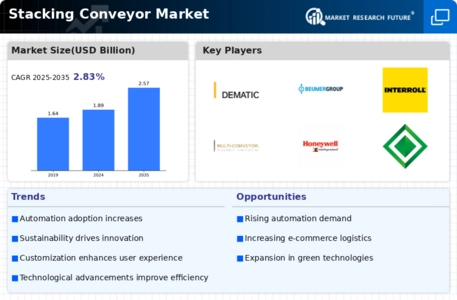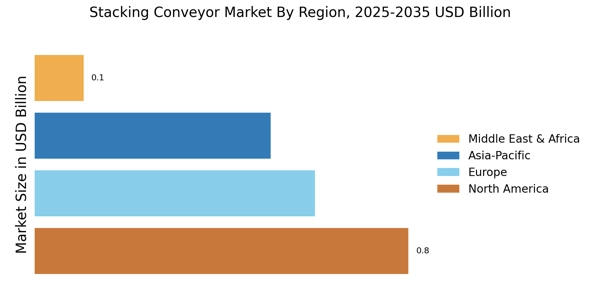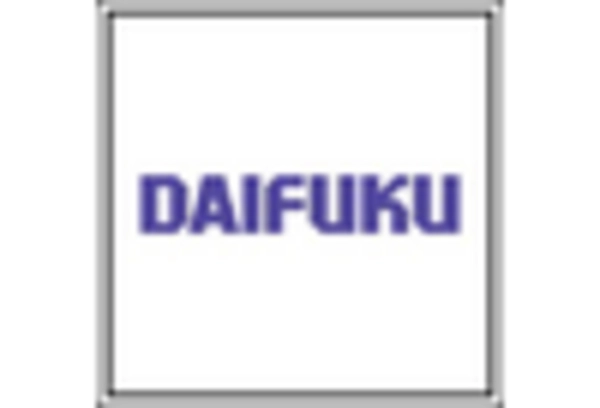Rising E-commerce and Retail Sector
The Stacking Conveyor Market is significantly influenced by the rising e-commerce and retail sector. As online shopping continues to gain traction, warehouses and distribution centers are under pressure to enhance their operational efficiency. Stacking conveyors play a crucial role in facilitating the rapid movement and organization of goods within these facilities. Recent statistics suggest that the e-commerce sector is projected to grow at a remarkable rate, necessitating the adoption of efficient material handling solutions. This trend indicates a strong demand for stacking conveyors, as businesses seek to optimize their logistics and meet consumer expectations for faster delivery times.
Sustainability and Eco-friendly Practices
Sustainability is increasingly influencing the Stacking Conveyor Market, as companies adopt eco-friendly practices in their operations. The demand for energy-efficient and recyclable materials in conveyor systems is on the rise. Manufacturers are responding by developing stacking conveyors that minimize energy consumption and reduce waste. This shift aligns with broader industry trends towards sustainability, as organizations seek to lower their carbon footprint. Market data indicates that the green technology sector is expanding, suggesting that the integration of sustainable practices in conveyor systems will become a significant driver for growth in the stacking conveyor market.
Focus on Space Optimization in Warehousing
Space optimization has become a critical focus within the Stacking Conveyor Market, particularly in warehousing and distribution centers. As real estate costs rise, companies are compelled to maximize their available space. Stacking conveyors offer a solution by allowing for vertical storage and efficient use of floor space. This trend is supported by data indicating that the warehousing market is expanding, with a growing emphasis on innovative storage solutions. The ability of stacking conveyors to enhance space utilization while maintaining operational efficiency positions them as a key component in modern warehousing strategies.
Technological Advancements in Conveyor Systems
Technological advancements are reshaping the Stacking Conveyor Market, leading to the development of more sophisticated and efficient systems. Innovations such as smart sensors, automated controls, and enhanced materials are being integrated into conveyor designs. These advancements not only improve the performance of stacking conveyors but also reduce maintenance costs and downtime. The market for conveyor systems is expected to witness a compound annual growth rate, driven by these technological improvements. As industries increasingly adopt automation, the demand for advanced stacking conveyors that can seamlessly integrate with existing systems is likely to rise, indicating a robust future for the market.
Increased Demand for Efficient Material Handling
The Stacking Conveyor Market experiences heightened demand for efficient material handling solutions. As industries strive to optimize their operations, the need for conveyors that can stack materials effectively becomes paramount. This trend is particularly evident in sectors such as manufacturing and logistics, where the ability to manage space and streamline processes is crucial. According to recent data, the material handling equipment market is projected to grow significantly, with conveyors playing a vital role in this expansion. The integration of advanced technologies, such as automation and IoT, further enhances the efficiency of stacking conveyors, making them indispensable in modern operations.


















Leave a Comment